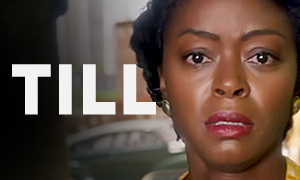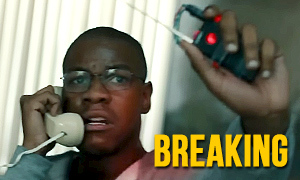The Crowded Room: History vs. Hollywood
Tom Holland
Born: June 1, 1996
Birthplace:
Kingston upon Thames, England, UK
Billy Milligan
Born: February 14, 1955
Birthplace: Miami Beach, Florida, USA
Death: December 12, 2014, Columbus, Ohio, USA (cancer - soft tissue sarcoma)
Renamed Danny Sullivan in the Series
Emmy Rossum
Born: September 12, 1986
Birthplace:
New York City, New York, USA
Dorothy Sands
Born: February 18, 1929
Birthplace: Amanda, Ohio, USA
Death: August 25, 2012, Lancaster, Ohio, USA
Bio: Billy Milligan's Mother
Renamed Candy Sullivan in the Series
Will Chase
Born: September 12, 1970
Birthplace:
Frankfort, Kentucky, USA
Chalmer Milligan
Born: October 17, 1927
Birthplace: Lancaster, Ohio, USA
Death: December 14, 1988, Lancaster, Ohio, USA
How closely is The Crowded Room based on a true story?
The Crowded Room was inspired by Daniel Keyes' 1981 non-fiction novel The Minds of Billy Milligan. While author Keyes claimed that his "book is essentially [Billy's] memories, his dialogue, nothing invented," Billy's sister, Kathy Preston, disagrees. "Dr. Keyes spent a lot of time interviewing the family, interviewing people that were involved with Billy and Billy's case, trying to get the story. I do know that parts of the book [are] fictionalized, but he wanted to believe everything that Billy said, at all times. And that bothered me a little bit because you're interviewing a mentally ill patient, someone that is easily manipulated or can manipulate others. So that leads the reader to have to wonder, 'What is real and what is not?'" -Monsters Inside
The Apple TV+ miniseries itself is significantly fictionalized and shares only loose connections with Milligan's case, so much so that he is renamed Danny Sullivan in the series. The creator of the ten-episode series, Akiva Goldsman (I Am Legend, A Beautiful Mind), has fabricated new characters and fictionalized others to fill the length of the show, and as a result, a significant portion of the storyline diverges from the real-life account, as we'll explain below.
Did the real-life events unfold in New York?
No. While conducting The Crowded Room fact-check, we learned that the real-life events that inspired the Apple TV+ series unfolded in the Columbus area, not Manhattan. In the TV show, the events for which the main character stands accused happen in the summer of 1979, not the real-life year of 1977. -The Columbus Dispatch
Was Billy Milligan abused as a child?
Yes. The Billy Milligan documentary on Netflix describes the severe physical and sexual abuse that was inflicted on him by his stepfather, a trucker named Chalmer Milligan. Both at his trial and in the Netflix docuseries, Billy's mother, brother and sister all attest to the torment and brutality he endured at the hands of his stepfather. Chalmer, who died in 1988, always denied the allegations.
What were Billy Milligan's crimes?
Billy Milligan, the criminal who inspired Tom Holland's character, Danny Sullivan, committed numerous crimes, including armed robbery and rape. In 1972, he was arrested in Circleville, Ohio for an alleged kidnapping and rape. He was convicted in February 1973 and committed to a juvenile institution. In 1975, he was sent to Ohio's Lebanon Correctional Institution for robbing a drugstore with two other men and was paroled in early 1977.
Later that year, over a span of 12 days, he kidnapped, robbed and raped three women in the vicinity of the Ohio State University campus and was arrested in October 1977. Investigators managed to link him to the crimes from fingerprints that were lifted from one of the victims' cars and the fact that another victim identified him from mugshots of sex offenders. Nicknamed The Campus Rapist, Billy Milligan had used a gun during the assaults and guns were found when police searched his residence, which was a violation of his parole.
According to Daniel Keyes' book, The Minds of Billy Milligan, he was indicted on "three counts of [kidnapping], three counts of aggravated robbery and four counts of rape." As he awaited the start of his trial, he was held in the Ohio State Penitentiary.
Is Amanda Seyfried's character, Rya Goodwin, based on a real psychiatrist?
In researching The Crowded Room true story, we discovered that there is no real Rya Goodwin. Instead, her actions in the series represent an amalgamation of the involvement of the different real-life psychiatrists who analyzed Billy Milligan (the real Danny Sullivan) and determined he was suffering from multiple personality disorder, now known as dissociative identity disorder. There were indeed female psychiatrists who evaluated and diagnosed Milligan, including Dr. Dorothy Turner, who spent a considerable about of time with him and was the first to suspect he might be suffering from multiple personality disorder. Later, he was studied by famed psychologist Dr. Cornelia Wilbur, who was known for her analysis of Sybil Dorsett (a pseudonym that was used to protect the privacy of Shirley Ardell Mason), a patient diagnosed with 16 personalities who inspired the 1973 book and the 1976 two-part Sally Field TV movie Sybil. Wilbur claimed that she diagnosed Milligan in 20 minutes.
While Rya Goodwin is not based on any single psychiatrist connected to the Billy Milligan case, the show's creator, Akiva Goldman, said that he based Amanda Seyfried's character on his mother, Mira Rothenberg, a renowned child psychologist who developed pioneering therapy for autistic and schizophrenic children.
Was Billy Milligan the first person in U.S. history to be found not guilty due to dissociative identity disorder?
Yes. In researching how accurate is The Crowded Room, we learned that as his public defenders, Gary Schweickart and Judy Stevenson, prepared for his trial, a psychologist diagnosed Billy Milligan (the inspiration for Tom Holland's Danny Sullivan character) with multiple personality disorder, which was renamed dissociative identity disorder in the 1990s. Several psychologists had examined him. One of the psychologists, Dr. Willis C. Driscoll, diagnosed Billy with acute schizophrenia. Another, Dr. Dorothy Turner, who worked for Southwest Community Mental Health Center in Columbus, Ohio, concluded that Billy Milligan likely suffered from multiple personality disorder. Dr. Cornelia Wilbur, who was famous for her work on the case that inspired the book and TV movie Sybil, confirmed the diagnosis and worked with the defense to prepare for the trial.
"Multiple personality disorder creates a kind of excitement in therapists and in patients that made it remarkably popular. Dr. Wilbur, who's a famous person now because of the book and the movie Sybil, creating with the defense attorneys a plausible excuse for his three rapes," says Professor of Psychiatry Dr. Allen J. Frances. "Together, Wilbur and Milligan, maybe sincerely on her part, who knows, probably not sincerely on his part, were able to create a narrative of multiple personalities that would explain to the public and excuse to the legal system, the terrible crimes he committed."
The defense argued that Billy Milligan's crimes were committed by at least two of his alternate personalities. The robberies were carried out by Ragen, a 23-year-old Yugoslav communist, and the rapes were the responsibility of Adalana, an introverted 19-year-old lesbian. The argument was convincing enough to lead Judge Jay C. Flowers of the Franklin County Common Pleas Court to issue a verdict of not guilty by reason of insanity. Not only was Billy Milligan the first person to use multiple personality disorder as a defense, he was also the first person acquitted of such heinous crimes for that reason. For the next decade, he was housed in psychiatric hospitals.
Did Billy Milligan have multiple personalities?
The question that was left on the minds of those who were following Billy Milligan's case at the time was whether the multiple personality claim was simply a clever defense strategy or an actual serious psychological condition that was afflicting Billy. Some suggested that Billy's unstable and troubled childhood, including the physical and sexual abuse inflicted on him by his stepfather, Chalmer Milligan, was a possible explanation for his fragmented personality. Others credited his defense team with concocting what was seemingly his only way to stay out of prison.
His defense team built upon his claim that he had trouble remembering the petty crimes he committed as an adolescent, reasoning that he had committed them while inhabiting other personalities. Helping their cause was the fact that one of the women he raped told investigators that her assailant had a German accent, though Milligan was born in Florida and raised mostly in Ohio. During the trial, his lawyers managed to turn someone who had been perceived as a criminal into someone who was now being painted as a sort of victim. -The Columbus Dispatch
Did Billy Milligan try to cash in on his notoriety?
Yes, and he apparently showed no shame in doing so. While he was housed in the Central Ohio Psychiatric Hospital, he collaborated with Daniel Keyes on the author's 1981 book The Minds of Billy Milligan. Another way he cashed in on his notoriety was by selling paintings that he did for high prices. He also teamed up with James Cameron for a biopic about his life that was based on Keyes' book. However, the collaboration went south due to lengthy negotiations and financial changes. Milligan ended up suing Cameron, which contributed to Cameron abandoning the project. "He got in the middle of this whole thing because he wanted his story told," said Cameron. "He was running around creating more chaos, filing lawsuits. It turned into madness."
Was Billy Milligan married?
While housed at the Dayton Forensic Center in Ohio, Billy met a visitor to the facility named Tanda Bartley. She was the sister of his friend and copatient, Don Bartley. After the two got to know each other, a love affair ensued and they were married in December 1981 in the visitors' room at the Forensic Center. A small number of guests attended the ceremony, including Dr. Daniel Keyes, who wrote the book about Billy. However, it wasn't long before Tanda decided that she made a mistake. She ended things with Billy in 1982 after just 51 days of marriage. "She wrote him a nice goodbye letter, 'I can't do this,' took the money that he got from some of the book royalty, and left," says Billy's sister, Kathy Preston. -Monsters Inside
Did Billy Milligan escape from a psychiatric hospital?
Yes. The Crowded Room fact-check confirms that the real Danny Sullivan, Billy Milligan, escaped from the Central Ohio Psychiatric Hospital in Columbus on July 4, 1986 and relocated to the Pacific Northwest, adopting the alias Christopher Carr. While on the run, he recorded a video, stating, "First, I would like to make it very clear that I'm not a danger or threat to society or anyone else. I left in self-defense. I have a genuine fear for my personal safety, and as all I could do is wait until the legal system works itself out. I'm a victim of their politics." -Monsters Inside
Prior to his recapture, he lived with a roommate in an apartment who he is suspected of abducting and murdering. Milligan was arrested without incident in Florida on November 20, 1986 at the bar of the Key Biscayne Hotel and Villas, where he was meeting with his public defender, Randall Dana. The Ohio attorney had been in Miami for a law conference. According to Dana, he had been communicating with Milligan and making arrangements for him to surrender. -UPI Archives
Did Billy Milligan kill anybody?
Though never convicted of murder, Billy Milligan is suspected of killing two people and admitted to his niece that he was a murderer. One of the two people he is suspected of killing is the roommate he lived with in an apartment in Washington after he fled from a mental institution in July 1986 and adopted the alias Christopher Carr (he later claimed that he left the institution over concerns for his own wellbeing). His roommate, a 32-year-old Vietnam veteran named Michael Madden, was last seen by their landlord on September 15, 1986. As stated in the Netflix docuseries Monsters Inside: The 24 Faces of Billy Milligan, Michael and Billy (then using the alias Christopher) were overheard bickering that same day. Two days later, Michael's father filed a missing persons report.
As the docuseries notes, Billy's conduct after Michael Madden's disappearance was highly suspicious. Just days after Michael vanished, Billy sold Michael's car, claiming he used the money to settle a loan balance. He had also been collecting Michael's disability payments and redeemed a $7,500 G.I. Bill payment that was meant to pay for Michael's schooling at Western Washington University. A cleaner noticed that Billy had some of Michael's belongings, and more of Michael's items were found at Billy's cousin's house, including a pair of glasses with blood on them. DNA testing was still uncommon at the time, and without a body or other significant evidence, the police did not have enough to charge Billy, who, throughout the investigation, maintained his name was Christopher Carr.
In answering the question, "Did Billy Milligan kill anyone?" we also learned that he is credibly linked to another murder in Ohio. In 1990, he told his then-girlfriend Tracy that he was behind the brutal murder of a 23-year-old black man in Logan, Ohio. It is believed that man is Dwaun Cox, who was last seen on November 21, 1979. Dwaun's car was found abandoned in the Logan area. Billy and Dwaun knew each other and had been friends. Like Michael Madden, Dwaun Cox's body has never been found.
How many personalities did Billy Milligan have?
Throughout the decade he spent in psychiatric hospitals, it was determined that Billy Milligan's personalities reached a total of 24 unique identities. At first, he revealed that he had 10 different personalities. Further examination by psychiatrist Dr. David Caul uncovered an additional 14 personalities. Milligan's large number of identities was the inspiration for the title of the four-part Netflix documentary Monsters Inside: The 24 Faces of Billy Milligan. The documentary includes footage of Milligan's psychiatric sessions during which he changes the accent of his voice depending on which personality he is inhabiting.
When was Billy Milligan released from the psychiatric hospital?
The Crowded Room true story reveals that he was released in 1988 and was officially discharged from the Ohio courts and mental health system on August 1, 1991.
Have any other movies or TV shows been made about Billy Milligan?
Kevin Crumb, the main character in M. Night Shyamalan's 2016 film Split, was based largely on Billy Milligan. Portrayed by James McAvoy, the character nearly quotes Milligan directly when he uses the phrase "taking the light," which was clearly inspired by Milligan's real-life phrase, "taking the spot." Like Milligan, Kevin Crumb has a total of 24 distinct personalities.
There have been attempts to turn Daniel Keyes' 1981 book, The Minds of Billy Milligan, into a movie since the early 1990s, with high-profile directors like James Cameron, Joel Schumacher and David Fincher connected to the project over the years. Big-name actors, including Leonardo DiCaprio, have been attached to star as Milligan. According to a 2015 Hollywood Reporter article, DiCaprio had been circling the role for almost 20 years. By 2021, the plan had changed and The Crowded Room was going to be turned into a ten-part TV series starring Tom Holland, as opposed to a DiCaprio movie.
How did Billy Milligan die?
While exploring The Crowded Room fact vs. fiction, we learned that the real Danny Sullivan, Billy Milligan, was living in Ohio on his sister's property when he was diagnosed with soft tissue sarcoma in 2012. He was eventually moved to a nursing home and died of cancer on December 12, 2014 at age 59.
Overall, how accurate is The Crowded Room?
In its opening titles, the Apple TV+ series states that it was inspired by Daniel Keyes' book, The Minds of Billy Milligan. Unlike the Netflix docuseries Monsters Inside: The 24 Faces of Billy Milligan, which presents a much more even-handed analysis of whether Milligan indeed suffered from dissociative identity disorder or was making it up, The Crowded Room aligns itself with the book's perspective that Milligan (renamed Danny Sullivan in the series) was telling the truth and was in many ways a victim himself. Because the validity of Milligan's condition is unknown to this day, the movie's choice to embrace him as a victim means that its interpretation is either mostly wrong or mostly right.
Perhaps The Daily Beast entertainment critic Nick Schager summed the series up best, stating in his review, "Whereas Milligan was a violent predator who was acquitted due to an intensely controversial reason (and diagnosis), this saga casts its main character as an unsuccessful killer whose actions and motives are justifiable because he's a passive victim of [dissociative identity disorder.]"
When it comes to Billy Milligan's diagnosis and motive, the series puts all of its eggs in one basket. A more haunting take would have been to leave the door open to the possibility that Milligan, and perhaps to some degree his lawyers, were making it all up to get a rapist off the hook for his crimes, which likely later resulted in him committing murder after escaping from a mental hospital. Of course, that take might be too honest for a culture so pervaded by victimhood.







